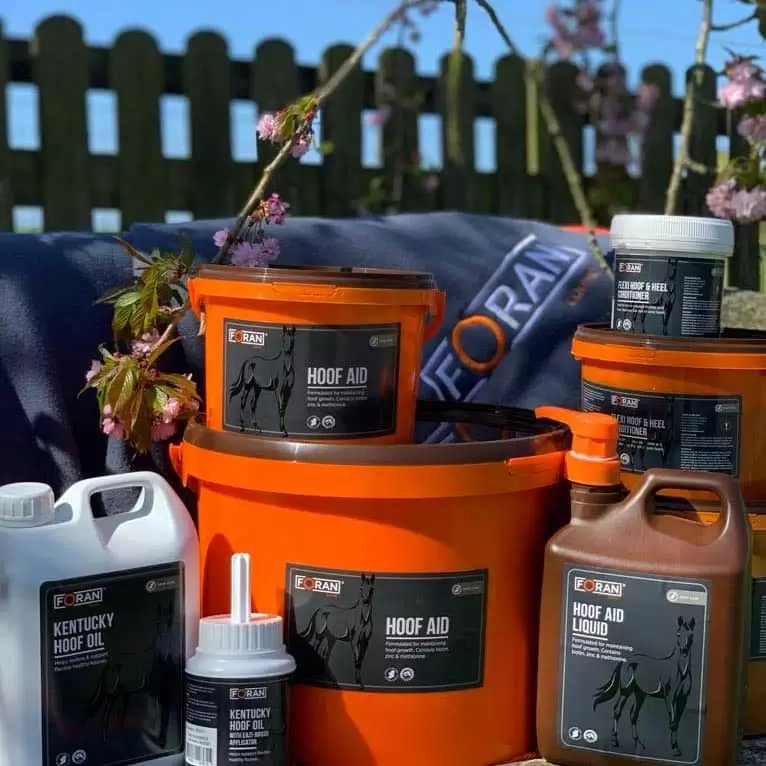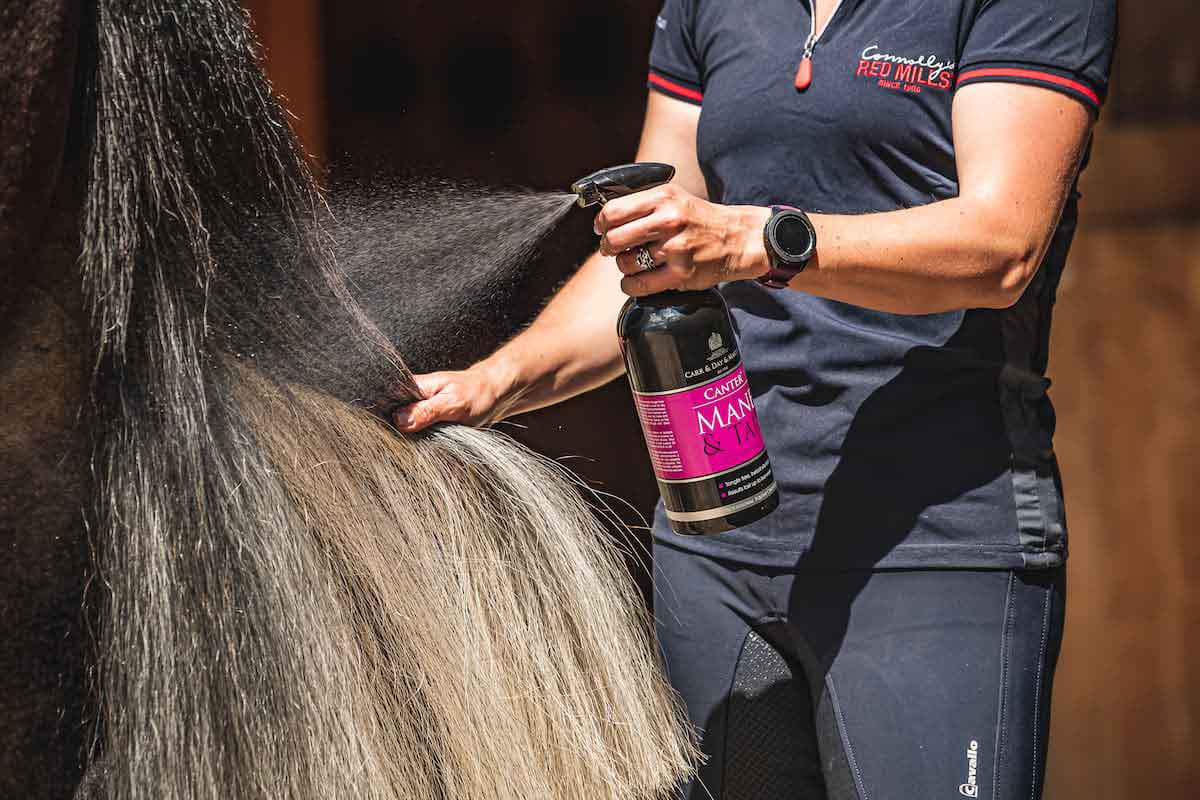Our Quality Assurance Laboratory
Olympic-quality testing and high-end quality control processes
Our investment in science and technology has placed us at the forefront of the industry, with our quality control and testing procedures enabling us to deliver the highest quality equine feed and nutrition solutions to our customers worldwide.

Our on-site laboratory plays a pivotal role in delivering an outstanding level of quality feed. Our ingredients are tested from harvest to final product, utilising the most advanced technology.
1. The Harvest Room
After harvesting, our raw materials are transported to RED MILLS, with every trailer load being sampled using long sampling spears to ensure accuracy (representative sampling). Each trailer load is logged and given its own unique traceability number. Thereafter, each sample is tested for Bushel weight, protein, moisture and dust mites.
Why we do this:
The output and impact of this process is to ensure our raw materials meet the level of quality we expect. It also guarantees safer and cleaner food, while microbes, moulds and bacteria remain under control.


2. The Sample Preparation Room Process:
Samples are prepared for NOPS testing, Wet Chemistry, NIR, and Vitamins & Minerals. The sampling technique is very important.
- A representative sample is a small quantity of something that accurately reflects the larger entity.
- We take a sample of feed (1 kg) from the mill and grind it to a powder form. We then mix the powder in a mixer and take a smaller sample for testing this mix.
- Cone and quartering method
- 1
Zentrifugen – NOPS Testing
- 2
Grinders (x2) – Grinds the sample down to a powder
- 3
Vortexer – Mixes the sample
- 4
ASE (Accelerator solvent extractor)
- 5
Rocket evaporator – evaporate sample to a smaller amount and more concentrated form
Why we do this:
We want to ensure the small quantity of feed we are testing accurately reflects the larger entity, i.e. when testing cubes, the product is consistent. For muesli, it can be difficult to get a representative sample from the feed. All vitamins and minerals are in the pellets.
The output or impact:
Once samples are prepared correctly, samples can be directly analysed on NOPS, NIR, Wet Chemistry, and Vitamins & Minerals.
3. Two primary approaches to testing forages and feeds:
(a) NIR
- Near infrared light is used to identify compounds and measure the amounts present in a sample
- Spectrum produced is a graphical illustration of how much energy has been reflected by your sample
- When a new product is being tested we ensure it has been calibrated for NIR using Wet Chemistry
- Advantages: Speed (s), non- destructive, requires no chemicals/solvents, capable of performing analysis on a number of components simultaneously


(b) Wet Chemistry
- Tried and trusted methods which are seen as the gold standard for confirmatory analysis
- Wet Chemistry are the most accurate at analysing feeds and forages for nutrient content
- Advantages: Accuracy
- Disadvantages: Time consuming and costly
- Moisture – moisture oven (2hours)
- Oil – Soxhlet extraction (5hours)
- Protein – Kjeldahl protein test (a) Protein digestion stage (1h) (b) Kjeltec distilling unit (5 mins)
- Ash – Ash furnace (5h) @550 degrees
- Fibre- Fibretec (more than one day)
4. The Cold Room:
Retained samples are stored in the cold room for at least the shelf life of the product at a temperature of 5 degrees.
- Records: product, bag number, batch, “manufacture” date, “best before” date, packing line.
- Various materials: seed plant, premixes, harvest, finished feeds and department samples
- Shelf life: paper bags (3mnts) and NFMS (9mmts)
Why we do this:
The output and impact of this step is to ensure good quality control practice. If any queries come in at a later stage, we can test our retained samples. We also do this for traceability purposes.
The two primary approaches to testing forages and feeds:
The output and impact of this step is to ensure good quality control practice. If any queries come in at a later stage, we can test our retained samples. We also do this for traceability purposes.


5. NOPS Testing Using the Q-Exactive Orbitrap
What happens on the Q- Exactive Orbitrap:
It tests raw materials and finished feeds for Naturally Occurring Prohibited Substances (NOPS).
Why we do this:
- We know how important reputation and product security is.
- As the leading supplier of performance horse feeds to the European and Asian Racing Industry, our products are used by nearly 100,000 performance horses per day, worldwide.
- Among the thousands of winners in 2018, horses that fed on Connolly’s RED MILLS won over 95 Grade 1 races or similar.
- We estimate that over 10,000 tests were carried out and horses that fed on Connolly’s RED MILLS were in the clear.
- While no company in the world can give an absolute guarantee that their products are free of naturally prohibited substances, we at Connolly’s RED MILLS believe that we do more than any other feed company to ensure our products are free of prohibited substances.
The output or impact:
- Connolly’s RED MILLS is the first company to utilise the Olympic standard apparatus Q- Exactive Orbitrap to detect prohibited substances in horse feeds.
- Unlike its predecessor (LCMSMS) that could only test for a limited number to a level of about 20ppb, Q-Exactive Orbitrap does an entire scan of the product to an almost molecular level.
- This means we can now test to parts per billion for a range of naturally occurring forbidden substances, but we are simultaneously testing for unknown unknowns – substances which we can identify later, if requested, and establish if the product contained these substances or not.
- In addition, Connolly’s RED MILLS’ horse feed products are routinely tested by external laboratories for prohibited substances, including the Japan Racing Association Labs and Hong Kong Jockey club.
6. (a) Vitamin Recovery
What happens on the vitamin recovery apparatus:
- HPLC is used for vitamin analysis.
- It tests vitamins in premixes and finished feeds to ensure they are within the correct tolerances.


6. (b) Mineral XRF
What happens on the Mineral XRF apparatus:
- Mineral XRF analysis
- It tests mineral content and finished feeds to ensure they are within the correct tolerances.
Why we do this:
The output or impact of this is good quality control. We can recognise and/or flag any potential issues and address these accordingly.




